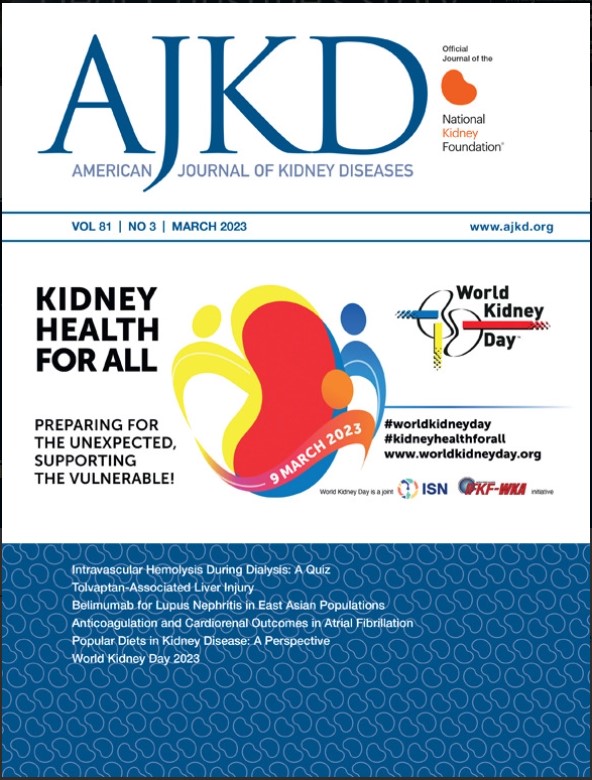Disorders of Volume: Core Curriculum 2025.
IF 9.4
1区 医学
Q1 UROLOGY & NEPHROLOGY
引用次数: 0
Abstract
Historically, the paradigm for all maladies was associated with an imbalance of the 4 humors: blood, black bile, yellow bile, and phlegm. Although our understanding of disease has evolved significantly since the time of Hippocrates, a similar cornerstone of inpatient and ambulatory care involves understanding and correcting imbalances of volume. The kidneys are the principal organs controlling extracellular volume, capable of both sensing and altering salt retention through multiple redundant pathways, including the sympathetic nervous system and the renin-angiotensin-aldosterone system. Various disease states including sepsis, heart failure, and liver cirrhosis can dramatically alter the movement of volume across body compartments, leading to pathologic responses. Greater understanding of the role of the endothelial glycocalyx, the harms of volume overload among critically ill patients, and the impact of venous congestion on kidney function has challenged the traditional paradigms of volume management. Because both hypovolemia and hypervolemia are symptomatic conditions associated with adverse outcomes, managing volume is an essential skill for the nephrologist. In this Core Curriculum, we review the physiology of volume disorders and management strategies through a series of clinical cases.卷的紊乱:核心课程2025。
历史上,所有疾病的范式都与四种体液的不平衡有关:血液、黑胆汁、黄胆汁和痰。尽管自希波克拉底时代以来,我们对疾病的理解已经有了显著的发展,但住院和门诊护理的一个类似基石涉及对体积失衡的理解和纠正。肾脏是控制细胞外体积的主要器官,能够通过多种冗余途径感知和改变盐潴留,包括交感神经系统和肾素-血管紧张素-醛固酮系统。包括败血症、心力衰竭和肝硬化在内的各种疾病状态可以显著改变身体各室的容积运动,从而导致病理反应。对内皮糖萼的作用、危重患者容量超载的危害以及静脉充血对肾功能的影响的深入了解,对传统的容量管理模式提出了挑战。由于低血容量和高血容量都是与不良后果相关的症状,因此管理血容量是肾病科医生的一项基本技能。在这个核心课程中,我们通过一系列的临床案例来回顾体积障碍的生理学和管理策略。
本文章由计算机程序翻译,如有差异,请以英文原文为准。
求助全文
约1分钟内获得全文
求助全文
来源期刊

American Journal of Kidney Diseases
医学-泌尿学与肾脏学
CiteScore
20.40
自引率
2.30%
发文量
732
审稿时长
3-8 weeks
期刊介绍:
The American Journal of Kidney Diseases (AJKD), the National Kidney Foundation's official journal, is globally recognized for its leadership in clinical nephrology content. Monthly, AJKD publishes original investigations on kidney diseases, hypertension, dialysis therapies, and kidney transplantation. Rigorous peer-review, statistical scrutiny, and a structured format characterize the publication process. Each issue includes case reports unveiling new diseases and potential therapeutic strategies.
 求助内容:
求助内容: 应助结果提醒方式:
应助结果提醒方式:


